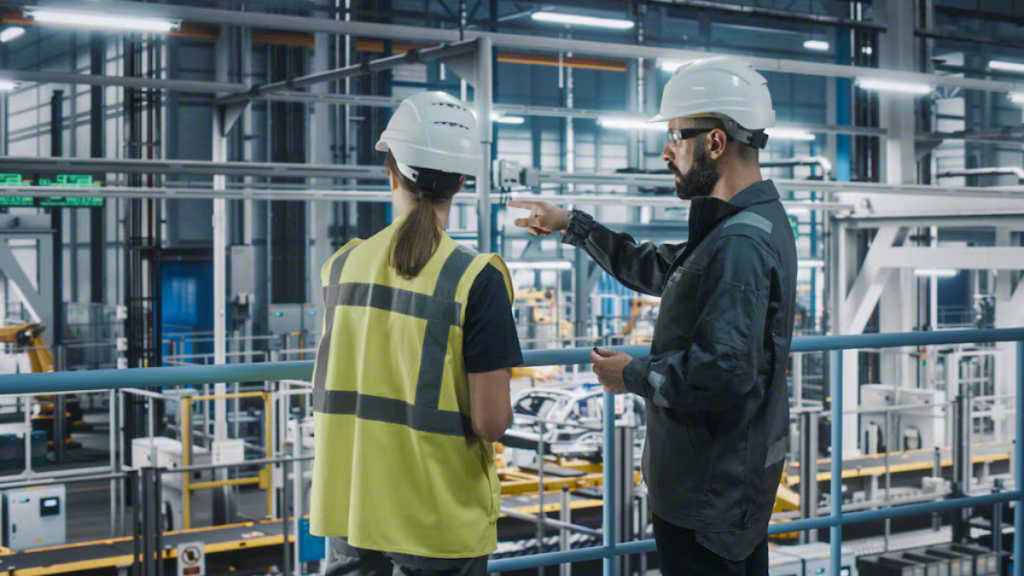Industrial and commercial facilities are often evaluated on their productivity, logistics, and output. But behind all the obvious performance metrics lie an invisible cost that’s quietly eating away at operational budgets: energy inefficiency. What many overlook is that access systems play a far larger role in energy consumption than they realize. From how goods are moved between levels to how exterior doors operate throughout the day, these mechanisms can be silent felons of waste.
Let’s begin where vertical movement intersects with energy use. Elevators are essential to multi-level facilities, enabling the fast and safe movement of personnel, goods, and equipment. But not all elevator systems are created equal. Conventional models, especially those installed without consideration for energy usage, often consume more power than necessary due to outdated motors, inefficient counterbalancing, or poor usage programming.
Modern elevator solutions offer regenerative drives that convert braking energy into reusable power, destination dispatching to reduce unnecessary stops, and smart load balancing to minimize strain. When elevators are chosen with these features in mind, energy optimization becomes a natural byproduct. And because elevators run all day in high-traffic areas, these improvements have an outsized impact on a facility’s overall efficiency.
Contents
The Hidden Cost of Access
Energy loss doesn’t always stem from complex systems. Sometimes, the loss is as simple as warm or cool air escaping through doors that open too often or stay open too long. Over time, this adds up to an enormous drain, especially in temperature-controlled environments like warehouses, laboratories, or cold storage facilities.
This is where access systems like overhead doors step into the spotlight. While their main function may appear to be entry and security, their role in maintaining a facility’s thermal envelope is critical. Old or poorly installed overhead doors create air leaks and allow unregulated drafts that make HVAC systems work overtime. Multiply this by hundreds of openings and closings each day, and the result is a significant, continuous loss of conditioned air.
Today’s overhead door systems come equipped with advanced insulation, airtight sealing, and fast-cycle motors. Some can even be programmed to open and close based on motion sensors or scheduled activity—ensuring minimal exposure to external elements. By integrating smart controls and high-speed automation, facilities can protect their internal climate, improve security, and significantly reduce their energy load.
When the Ground Floor Bleeds Energy
Energy inefficiency also thrives where movement is most intense: at the dock. Loading zones are notorious for energy loss due to their constant exchange between interior and exterior conditions. While logistics teams focus on loading speeds, equipment safety, and turnover rates, the environmental toll often goes unnoticed. And yet, it’s a space where energy savings could be most easily recaptured.
Dock levelers, in particular, play a pivotal role in this scenario. When not properly aligned or sealed, these systems leave gaps that allow external air to flood in, destabilizing interior climate conditions. On top of that, old dock equipment often lacks the adaptive features needed to efficiently match various vehicle heights or trailer positions, creating awkward angles that compromise thermal boundaries.
Upgraded dock systems now include weather-sealed lips, integrated bumpers, and automatic return-to-dock functions. Some feature vertical storing designs that keep the leveler inside and out of the elements when not in use, preventing heat or cool air loss. And when integrated with overhead doors and loading sensors, dock levelers become part of a tightly managed system that works in sync to keep energy waste at a minimum.
Operational Benefits That Go Beyond Energy
While energy savings are compelling on their own, the benefits of optimizing access systems reach even further. Reduced wear and tear on HVAC equipment leads to longer lifespans and fewer maintenance costs. Staff comfort improves when internal climates remain stable, which enhances productivity. Smart access systems also streamline facility operations, offering automation, predictive maintenance alerts, and centralized control panels.
Beyond comfort and cost, there is also the issue of compliance. As environmental regulations grow tighter and energy standards become more aggressive, facilities that invest in efficient access solutions stay ahead of mandates. It becomes easier to pursue certifications, meet sustainability goals, and present a forward-thinking image to stakeholders.
Designing for Long-Term Efficiency
The shift toward efficient access isn’t just about retrofitting old systems with new technology. It requires a strategic assessment of each facility’s layout, activity flow, and specific needs. Custom solutions allow businesses to deploy the right type of elevator, the most suitable overhead door, and the ideal dock configuration based on usage, frequency, and sensitivity to energy.
Unlike generic installations, tailored access systems align with a facility’s operational rhythm. They offer better compatibility with surrounding infrastructure and can be future-proofed for expansions or upgrades. More importantly, these custom-configured systems help avoid energy pitfalls that one-size-fits-all models tend to ignore.
Moving Forward with Intent
The next phase of industrial and commercial success won’t be driven solely by output—it will be shaped by how wisely we manage resources. Energy costs are rising, and so is scrutiny around operational waste. But hidden drains can be addressed effectively through deliberate system design.
By reconsidering everyday mechanisms like elevators, rethinking thermal boundaries with overhead doors, and reinforcing logistics zones with upgraded dock levelers, facilities can unlock substantial savings and long-term operational stability.
In a world that rewards efficiency and accountability, the path is clear: identify the quiet drains and install smarter solutions that move you forward—quietly, powerfully, and with purpose.

